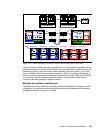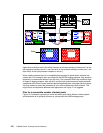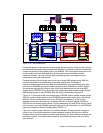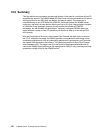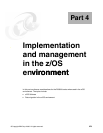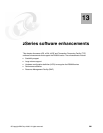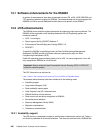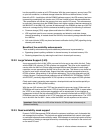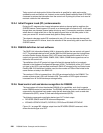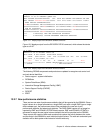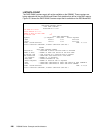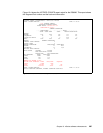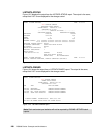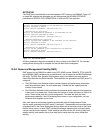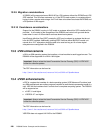
Chapter 13. zSeries software enhancements 283
has the capability to scale up to 63.75K devices. With the current support, we may have CPU
or spin lock contention, or exhaust storage below the 16M line at device failover, or both.
Now with z/OS 1.4 and higher with the DS8000 software support, the IOS recovery has been
improved by consolidating unit checks at an LSS level instead of each disconnected device.
This consolidation will shorten the recovery time as a result of I/O errors. This enhancement
is particularly important since the DS8000 has a much higher number of devices compared to
the IBM 2105. In the IBM 2105, we have 4K devices and in the DS8000 we have up to 63.75K
devices in a storage facility. With the enhanced scalability support, the following is achieved:
Common storage (CSA) usage (above and below the 16M line) is reduced.
IOS large block pool for error recovery processing and attention, and state change
interrupt processing, is located above the 16M line, thus reducing storage demand below
the 16M line.
Unit control blocks (UCB) are pinned and event notification facility (ENF) signalling during
channel path recovery.
Benefits of the scalability enhancements
These scalability enhancements provide additional performance improvements by:
Bypassing dynamic pathing validation in channel recovery for reduced recovery I/Os.
Reducing elapsed time, by reducing the wait time in channel path recovery.
13.2.2 Large Volume Support (LVS)
As we approach the limit of 64K UCBs, we need to find a way to stay within this limit. Today,
with the IBM 2105 volumes, 32,760 cylinders are supported. This gives us the capability to
remain within the 64K limit. But as today’s storage facilities tend to expand to even larger
capacities, we are approaching the 64K limit at a very fast rate. This leaves us no choice but
to plan for even larger volumes sizes. Support has been enhanced to expand volumes to
65,520 cylinders, using existing 16 bit cylinder addressing. This is often referred to as 64K
cylinder volumes. Components and products such as DADSM/CVAF, DFSMSdss, ICKDSF,
and DFSORT, previously shipped with 32,760 cylinders, now also support 65,520 cylinders.
Check point restart processing now supports a checkpoint data set that resides partially or
wholly above the 32,760 cylinder boundary.
With the new LVS volumes, the VTOC has the potential to grow very large. Callers such as
DFSMSdss will have to read the entire VTOC to find the last allocated DSCB. In cases where
the VTOC is very large, performance degradation will be experienced. A new interface is
implemented to return the high allocated DSCB on volumes initialized with an INDEX VTOC.
DFSMSdss uses this interface to limit VTOC searches and improve performance. The VTOC
has to be within the first 64K-1 tracks, while the INDEX can be anywhere on the volume.
13.2.3 Read availability mask support
Dynamic CHPID Management (DCM) allows the customer to define a pool of channels that
are managed by the system. The channels are added and deleted from control units based
on workload importance and availability needs. DCM attempts to avoid single points of failure
when adding or deleting a managed channel by not selecting an interface on the control unit
on the same I/O card.
Important: Global Mirror for z/OS will be limited to 32,760 cylinder volumes only at
General Availability.



